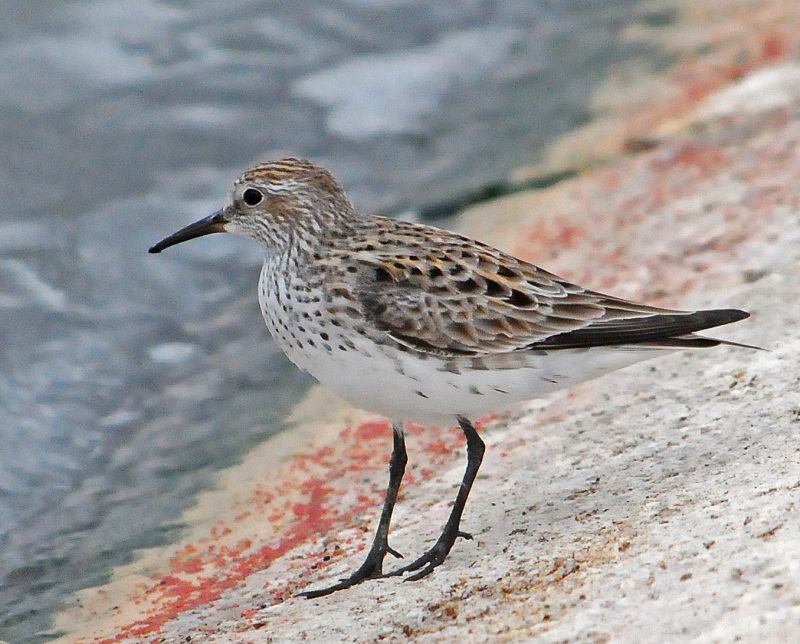Colours
Distinguishing features
Adults have black legs and a small thin dark bill. The body is dark brown on top and mainly white underneath, with brown streaks on the breast and a white rump. They have a white stripe over their eyes. This bird shows long wings in flight. In winter plumage, this species is pale gray above.
One of the best identification features is the long wings, which extend beyond the tail when the bird is on the ground. (Wikipedia)
Size
- Up to 20 cm (Length of specimen)
Wingspan
- Up to 43 cm
Synonyms
Similar taxa
-
Animalia:
Baird's Sandpiper (species: Calidris (Calidris) bairdii)
The White-rumped Sandpiper has long wings that extend beyond the tail when on the ground, like the Baird's Sandpiper ��������������������������������but that bird can be distinguished by its lack of a white rump. (Wikipedia)
Distribution
Distribution and habitat preferences
They are a long distance migrant, wintering in northern South America. They are rare but regular vagrants to western Europe. The species is a rare vagrant to Australia. (Wikipedia)
Diet
These birds forage by probing on mudflats or tundra or picking up food by sight in shallow water. They mainly eat insects, molluscs and marine worms, also some plant material. (Wikipedia)
Web resources
References
- Simpson, K., N. Day and P. Trusler (2004). Field Guide to Birds of Australia: 7th Edition Penguin Group (Australia), Camberwell, Victoria.



